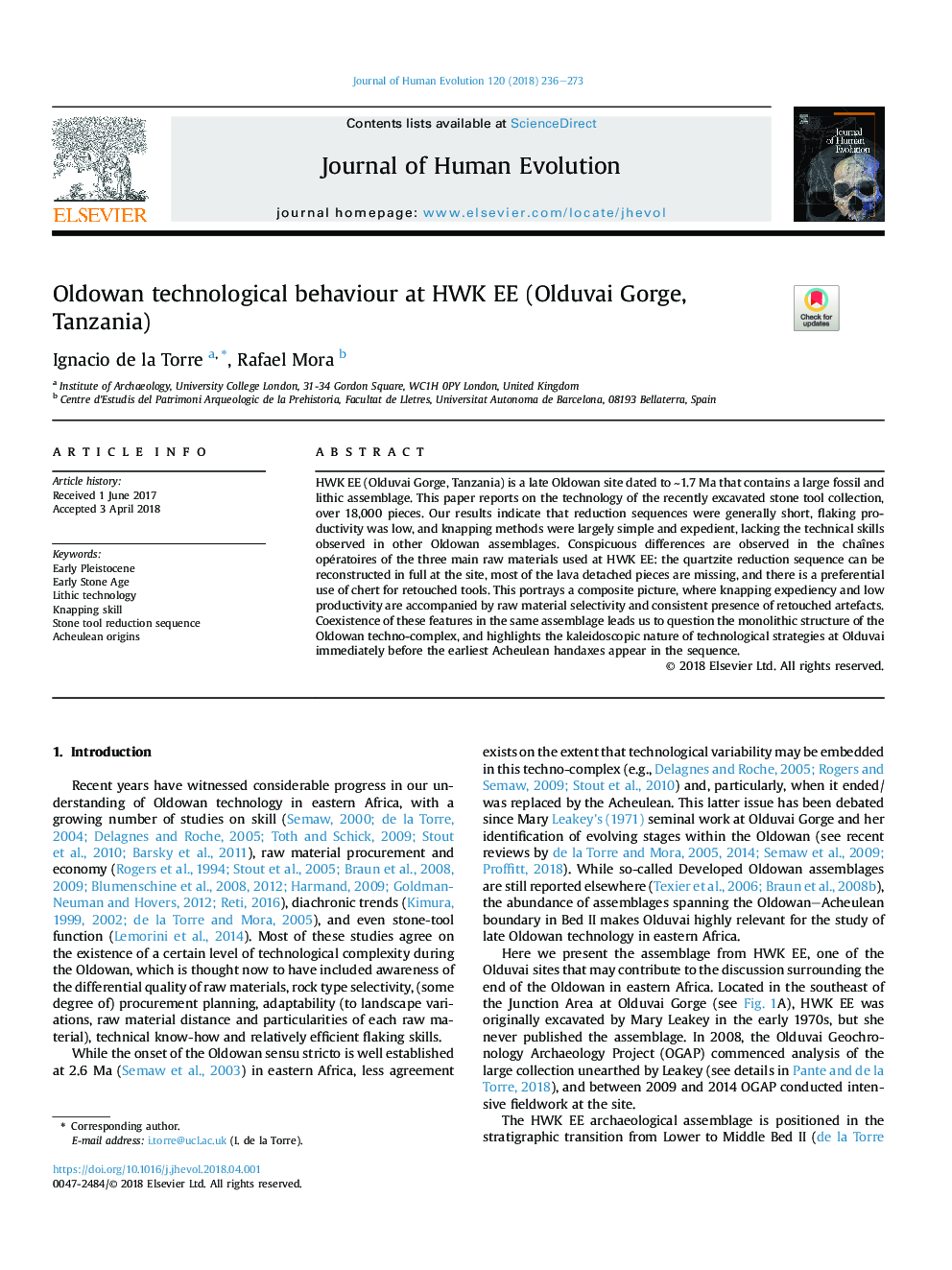| Article ID | Journal | Published Year | Pages | File Type |
|---|---|---|---|---|
| 8887253 | Journal of Human Evolution | 2018 | 38 Pages |
Abstract
HWK EE (Olduvai Gorge, Tanzania) is a late Oldowan site dated to â¼1.7 Ma that contains a large fossil and lithic assemblage. This paper reports on the technology of the recently excavated stone tool collection, over 18,000 pieces. Our results indicate that reduction sequences were generally short, flaking productivity was low, and knapping methods were largely simple and expedient, lacking the technical skills observed in other Oldowan assemblages. Conspicuous differences are observed in the chaînes opératoires of the three main raw materials used at HWK EE: the quartzite reduction sequence can be reconstructed in full at the site, most of the lava detached pieces are missing, and there is a preferential use of chert for retouched tools. This portrays a composite picture, where knapping expediency and low productivity are accompanied by raw material selectivity and consistent presence of retouched artefacts. Coexistence of these features in the same assemblage leads us to question the monolithic structure of the Oldowan techno-complex, and highlights the kaleidoscopic nature of technological strategies at Olduvai immediately before the earliest Acheulean handaxes appear in the sequence.
Related Topics
Life Sciences
Agricultural and Biological Sciences
Ecology, Evolution, Behavior and Systematics
Authors
Ignacio de la Torre, Rafael Mora,
